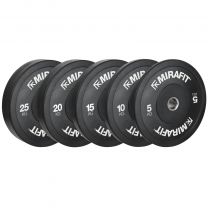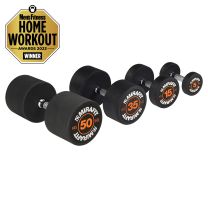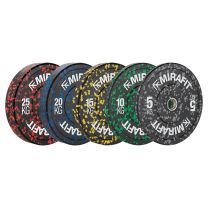What Are Isometric Exercises?
What Are Isometric Exercises?

Bicep curls are great, we all love the way our t-shirt feels tighter around the sleeves after a few sets. As you curl the weight up your biceps muscles shorten to move the weight. Repeat these enough times and your muscles will adapt and get stronger. We call this concentric contraction.
Now if you had to slowly lower the weight, your muscles are still contracting to prevent the weight from dropping but the muscle is getting longer. This is called eccentric contraction.
But what if you had to stop halfway and hold the weight in this position so the muscle is not getting shorter or longer. This is now called an isometric exercise, but are there any benefits from performing these static holds?
The Benefits of Isometric Exercises

Isometric exercises can be achieved by either using your own body weight in exercises such as the plank or by performing static holds with weights such as the front plate hold. Even though the muscles are not moving they are still undergoing metabolic stress which results in the muscles adapting and getting stronger.
Isometric exercises are ideal for developing core strength and stability. When you do an isometric exercise, the muscles tighten and resist movement. Think how the plank trains the abdominal muscles to tighten in a certain position and how this will help with a stronger posture and the ability to resist forces that create instability in the abdominal region.
So, we know that static holds are a great method to develop stability and core strength but what about strength? Strength gains are specific to the joint angles of the exercise. For instance, if you do quarter squats you will only develop strength in the quarter squat angle as opposed to a larger range of motion if you did full squats.
With isometric exercises you are only holding a single position and therefore only gain strength in this position. To ensure that you get a larger range of strength you should perform isometric exercises in different joint angles. An example would be doing the isometric squat but do static holds with the hips at various heights.
Do Isometric Exercises Build Bigger Muscles?
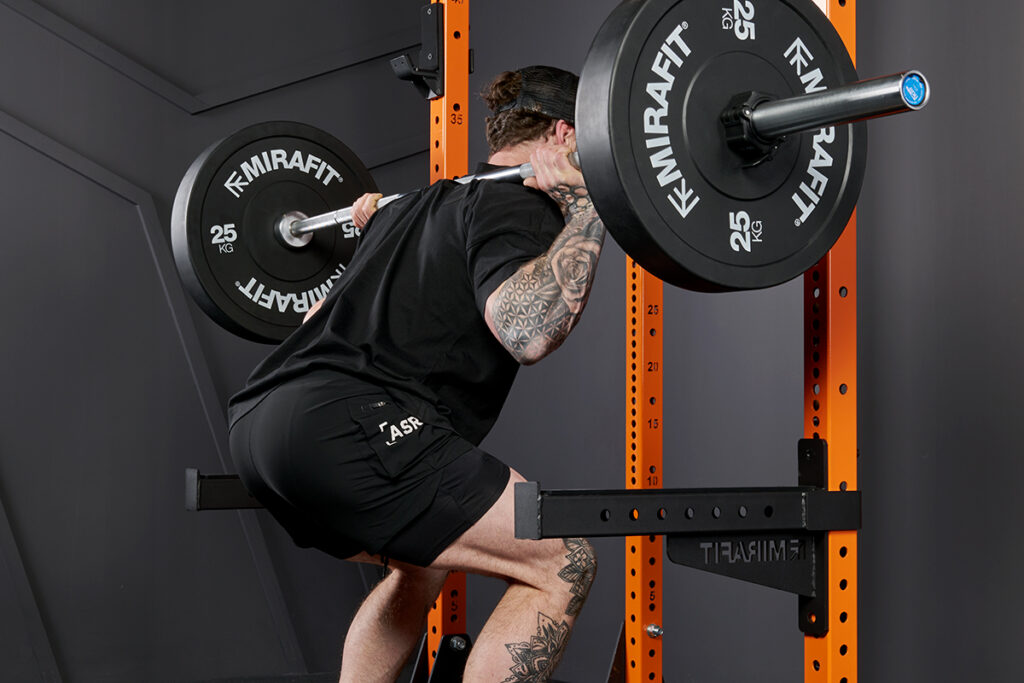
A great method to help increase hypertrophy would be to include isometric exercises into your normal exercises. Increased muscle size has been linked to increased time under tension. Basically, the longer you place a strain on the muscles the greater the response is to create more muscle fibres.
Isometric exercise can increase this time under tension by doing static holds during your reps. For instance, if you were doing barbell bicep curls you could pause and hold the barbell for 3 seconds every time you pass the halfway mark. You will still be getting the benefit of doing bicep curls but with an increased stimulus to increase muscle mass.
Examples of Isometric Exercises
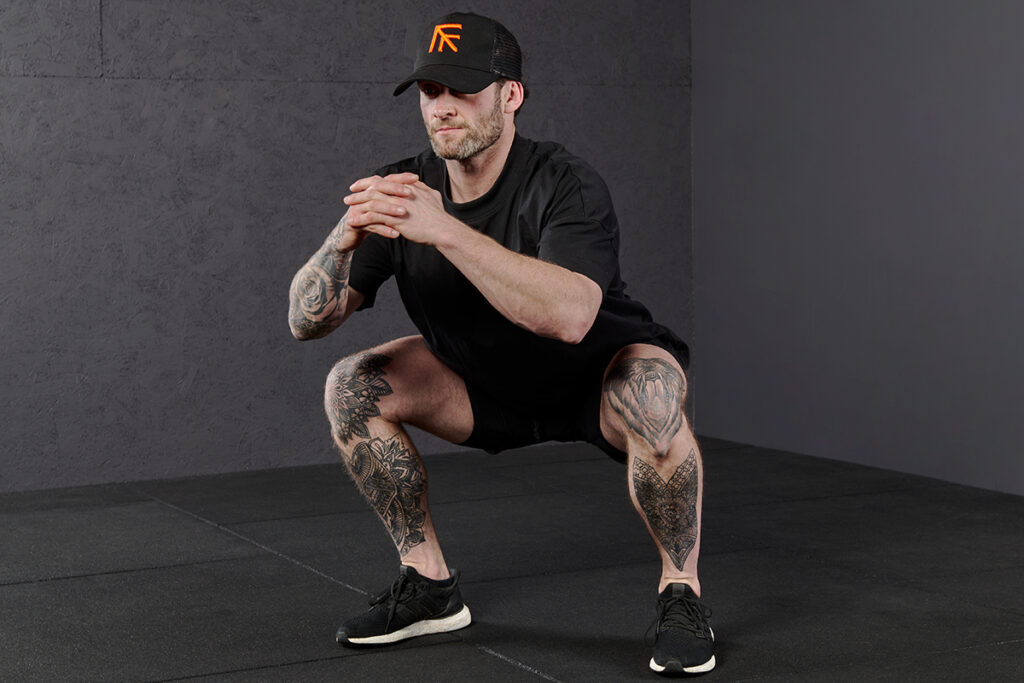
Planks
Place your elbows directly below your shoulders. Lift your hips off the floor with your feet together. You should tighten your abs, activate your glutes and pull your shoulder blades down your back to maintain a straight line from your head, through your spine to your hips
Benefits - Lower back pain from poor posture is common and is largely due to a lack of strength in the core region. This simple, yet effective exercise, will strengthen the core region by targeting rectus abdominis, transverse abdominis, obliques and gluteus maximus. By tightening these muscles, you will improve posture while laying a strong foundation to perform other strength exercises.
Hollow Holds
Lie on your back on an exercise mat with your legs out straight and your arms raised above your head on the floor. Lift your legs, head, shoulder and arms off the mat to form a V shape. Suck your belly button towards your spine and hold this position.
Benefits - This is an excellent exercise for the hip flexors and abdominal muscles. It can help pull the hips back into a neutral position to prevent tight hip flexors, improve posture and strengthen the core. If you are wanting to perform the Kipping pull up, then then this exercise is the ideal place to start your training.
Side Plank with Row
Hold a standard side plank position with your elbow under your shoulder, both feet together and your body in a straight line. Lift your hips off the floor and hold onto a Resistance Band that has been looped around a fixed object such as a power rack. Once stable in this position pull the resistance band towards your hips for the required number of reps.
Benefits - Most of us have done a side plank and felt the benefits of working the shoulder, abs and hips on one side. The important muscles that are worked include the glute medius for hip stability, the obliques and quadratus lumborum for rotational and core strength and finally the shoulder stabilising muscles of the rotator cuff. By including a rowing motion you get the added benefit of working the lats at the same time.
Glute Bridges
Lie on your back with your knees in line with your hips and your feet close to your glutes. Pull your abs towards your spine and tuck your tail bone in by squeezing the glutes. In this position push your hips up to form a straight line from your knees to your shoulders and hold this position. You can always add weight plates to make it harder.
Benefits - The glutes are one of the largest muscles in the body and are highly active in motions such as running as well as playing a big role in posture. Most hamstring injuries can also be attributed to weak glutes.
Dead Hangs
Grip a Pull Up Bar with an overhand grip, shoulder width apart. Step off a bench to lower your weight or lift your legs off the floor. Keep your arms straight and hold this position.
Benefits - An excellent upper body exercise. Just by holding onto the bar you are increasing your grip strength. Dead hangs are also excellent for shoulder strength and injury prevention. The muscles around the scapula are required to stabilise and results in stronger muscles surrounding the shoulder joint. By strengthening the shoulders, you can avoid shoulder pain and injury. The spine and the muscles of the back are also stretched in this position.
Isometric Barbell Squats
Set up your barbell on your squat rack by selecting an appropriate weight. Remember to reduce the load from your normal squat routine. Perform your squat and at the desired joint angle stop and hold the position for 3 seconds or more before returning to the top of the squat. Complete for the required number of reps.
Benefits - An isometric Barbell squat involves holding a static squat with a barbell. While the static squat on its own will help build strength, it becomes a more powerful exercise by including it with normal squats. This will increase the effect of hypertrophy. Make sure to train the static hold at different angles to prevent a weakness in the neglected joint angles.
Overhead Kettlebell Holds
Rack a kettlebell up to your shoulders and then perform a shoulder press to push it above your head. Tighten your abs and glutes and hold the kettlebell in this position.
Benefits - The static overhead kettlebell hold is a great way to condition the strength and stability of the shoulders. By using a single kettlebell, you are also creating an offset weight which requires the entire midline of the body to stabilise.
Isometric Dumbbell Curls
Hold a dumbbell in each hand. With one hand perform bicep curls while with the opposite hand statically hold the bicep at a 90-degree angle. Swap arms to perform the same on the other side.
Benefits - Get bigger arms by adding an isometric exercise into your bicep curls.
Isometric exercises generally require very little space and equipment making them very versatile. Use isometric exercises on their own to increase strength. This is most beneficial when used for core strength exercises. The duration of hold for these should be 10 seconds or longer. You can also help increase the hypertrophy effect by increasing the time under tension of each exercise. To do this include static holds of around 3 seconds into the standard exercise.
Written by guest author Brendan McBirnie.
For more content, follow us on Instagram, YouTube, TikTok, and on our official Mirafit Facebook page.
Enter your email to signup to our newsletter
Tags: Exercise Type > Strength

